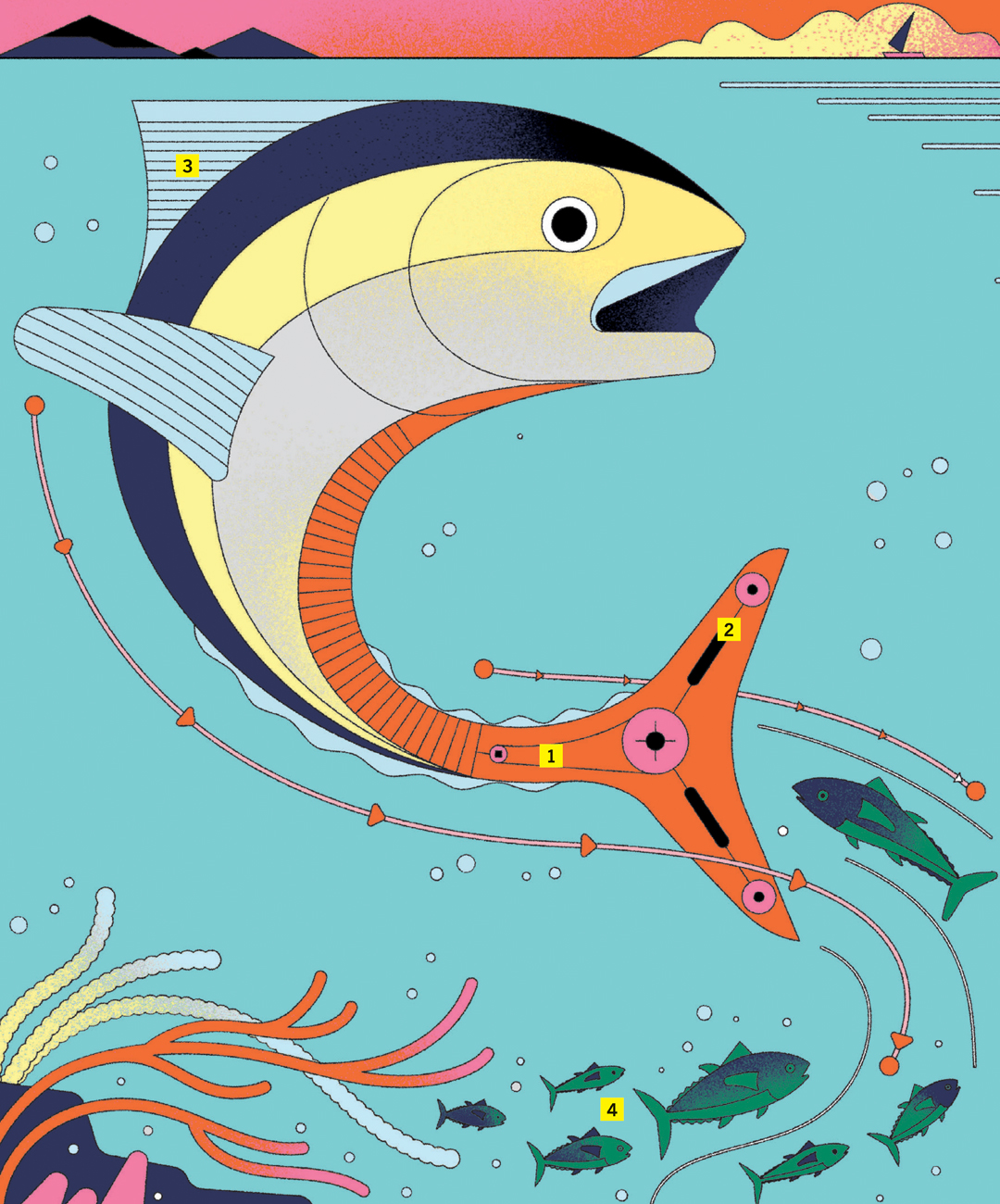As seen in the Spring 2021 issue of the Lehigh Bulletin...
Keith W. Moored, an associate professor of mechanical engineering and mechanics, is working with a team of researchers to better understand the swimming efficiency of tuna, as well as whales and dolphins, to develop the next generation of underwater vehicles. The research is part of a $7 million-plus multi-university project supported by the Office of Naval Research. Moored’s work also is funded by a National Science Foundation CAREER award.
Moored’s team examined the fluid mechanics of tuna and other aquatic animals by numerically simulating oscillating tail fins. For the first time, the researchers were able to develop a model that could quantitatively predict how the motions of the fin should be tailored to its shape to maximize efficiency. The research could inspire the development of underwater craft that so closely mimic tuna and other aquatic animals they will fool fish and humans alike and help yield information that ranges from the health of fish stocks to the location of foreign watercraft.

1. Heaving and Pitching
The tuna oscillates its caudal (tail) fin with a combination of side-to-side translation and rotation about the peduncle (the junction between its tailstock and tail fin).
2. Bending Pattern
The flexibility and the way the caudal fins flex are important variables; proper tailoring can lead to high-efficiency swimming.
3. Fin Arrangement
Additional dorsal and anal fin structures near its mid-body essentially pre-condition the flow that the caudal fin experiences. When these interactions are properly manipulated, they dramatically boost the efficiency and speed of swimming.
4. Synchronization
With proper synchronization of the tuna's caudal fin motions and with special schooling arrangements, tuna can enhance their performance significantly.
Illustration by Bratislav Milenkovic

